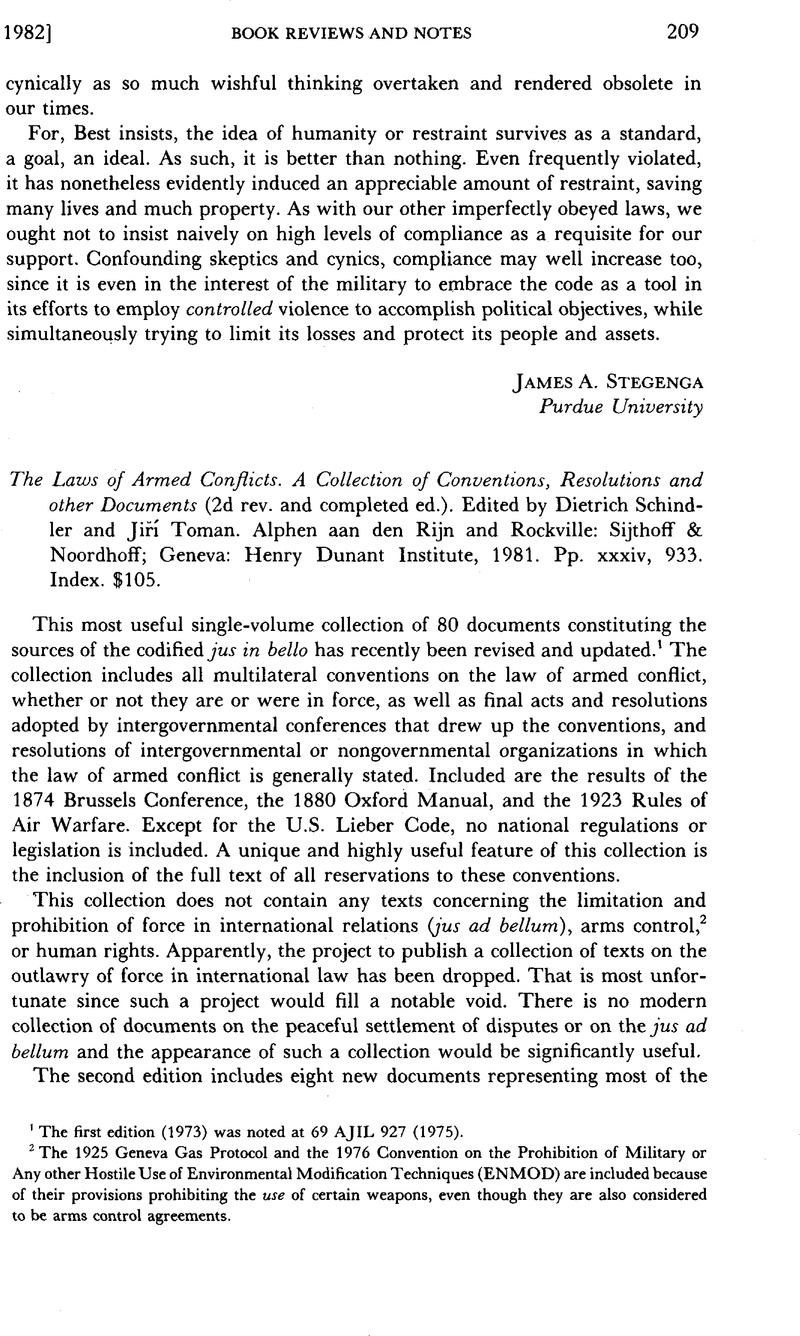No CrossRef data available.
Published online by Cambridge University Press: 27 February 2017

1 The first edition (1973) was noted at 69 AJIL 927 (1975).
2 The 1925 Geneva Gas Protocol and the 1976 Convention on the Prohibition of Military or Any other Hostile Use of Environmental Modification Techniques (ENMOD) are included because of their provisions prohibiting the use of certain weapons, even though they are also considered to be arms control agreements.
3 16 ILM 1391 and 1442 (1977).
4 Erroneously stated not to be in force. The ENMOD Convention entered into force on Oct. 5, 1978.
5 19 ILM 1524–35 (1980); 21 Int’l Rev. of the Red Cross 20–32 (1981).
6 A list of parties to the Geneva Conventions and Additional Protocols, updated quarterly, is available from the Dissemination and Documentation Division of the International Committee of the Red Cross, 17 avenue de la Paix, CH–1211 Geneva, Switzerland.
7 Such as the Additional Protocols, supra note 2, and the Edinburgh Resolution of the Institute of International Law, on the distinction between military objectives and nonmilitary objects in general and particularly the problems associated with weapons of mass destruction; 66 AJIL 470– 71 (1972). Schindler and Toman also fail to note the exceptions taken by the United States to portions of this resolution; 67 AJIL 122–25 (1973).
8 However, other provisions of Additional Protocol I were explicitly not designed to affect the law of naval warfare. For example, the “existing generally recognized rules of international law applicable to espionage or to the use of flags in the conduct of armed conflict at sea” are not affected by Article 37(1)(d) regarding perfidy or Article 39 regarding emblems of nationality. Also the provisions of part IV providing general protection against effects of hostilities for the civilian population apply to “all attacks from the sea or from the air against objectives on land but do not otherwise affect the rules of international law applicable to armed conflict at sea or in the air”; Additional Protocol I, Art. 49(3).